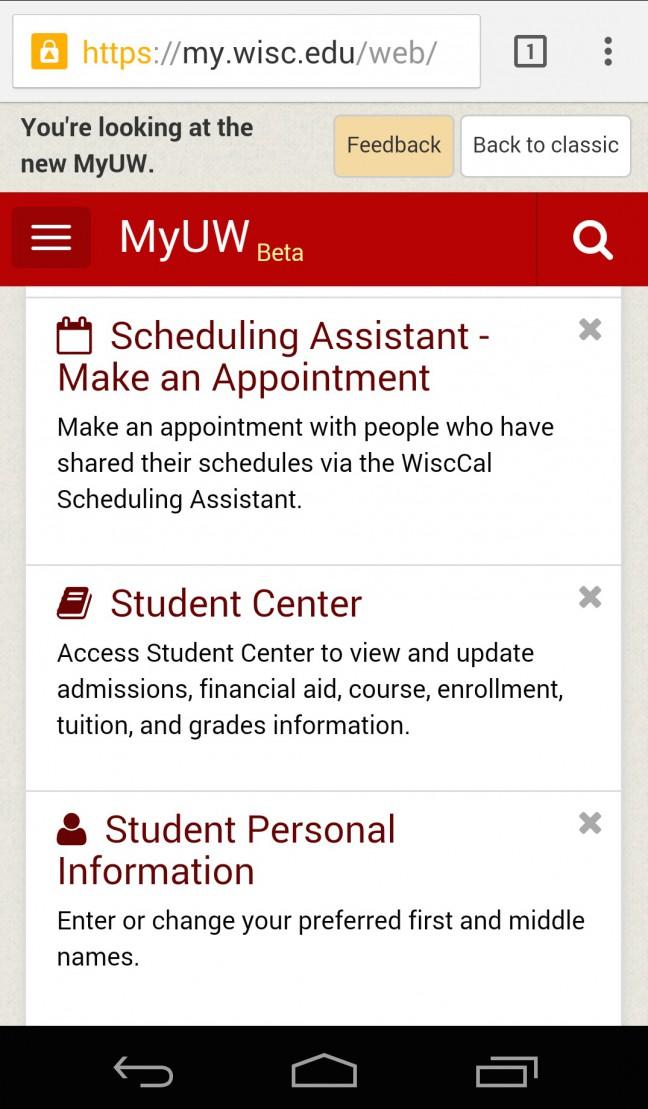Three teams and two individuals received University of Wisconsin Administrative Improvement Awards, as announced by UW yesterday.
The award recipients received acknowledgment for their work supporting the academic and research mission of the university, directly or through their work in student services, outreach or other administrative positions, a press release from UW News said.
“The UW-Madison Administrative Improvement Awards recognize outstanding work in process, service or delivery redesign or developments that improve efficiency or increase revenue channels, cost savings, or improve service delivery,” the release said.
Typically, nominees and award recipients would attend a ceremony open to the campus community. But according to the release, this year’s event has been cancelled due to the COVID-19 pandemic.
Award recipients will still receive a cash prize and the opportunity to apply for additional funding to support their work, the release said.
Chancellor Rebecca Blank said in the release the award winners have shown their drive to improve the campus community.
“The Administrative Improvement Award winners demonstrate some of the most important values of our university, including collaboration, innovation and forward progress,” Blank said. “We should all strive to incorporate these values into our everyday work, using these award-winning teams and individuals as inspiration.”
The first award recipient was Chief Financial Officer and Director of Financial Services Sarah Hart McGuinnis, for her work with DoIT.
McGuinnis and her team led an important effort to remove the internal chargeback system and apply a standardized internal budget allocation model, according to the release.
Because of McGuinnis’ leadership, the release said DoIT enhanced its ability to strategically allocate time and resources, estimate the costs of services and simplify budget activities with a centralized budget process.
Another award winner was Human Resources Specialist Rachel Simonson from the Office of Human Resources.
Simonson led an effort to utilize existing IT systems that could automate the reference checking process for all campus divisions, the release said. This new process improved efficiency and tracking capabilities, and simplified an otherwise inconvenient process.
The Combined Tuition and Housing Bill Project Team was also a recipient of the award.
According to the release, this team developed a new system that combines all tuition and housing charges, so they appear under one bill with a single portal for online payment.
The release said this new process will reduce confusion for students and parents, and it may even result in a net cost saving for campus.
Another recipient of the award, the Facilities Service Excellence Team, implemented a new Integrated Workplace Management System called AssetWorks, according to the release.
AssetWorks now allows Facilities Planning and Management to capture more accurate, consistent and timely data, the release said. FP&M supervisors can access real-time information about the work the division performs.
The Student Information System Optimization Program Team received the award for its development of a system called Campus Solutions 9.2.
SIS Optimization Program Manager Jeremy Traska said the team wanted to improve the user’s experience with new functionalities.
“We really wanted to make sure we continued accurate, timely access to [the] student information system,” Traska said. “We want to make sure we still delivered meaningful content to faculty, students and staff.”
Traska said his team made lots of small, behind-the-scenes changes to make the system more efficient and stable, Traska said.
Some of the forward facing changes included making the student center easier and more fluid, and updating its visuals, which had not been updated since 1999, Traska added.
The team also developed one area for enrollment — the course search and enroll application. Before, Traska said, there were different ways to enroll. They also added the pre-enrollment checklist, intended to guide students through updating their important info.
“It’s a really good validation that our approach was worth it,” Traska said. “We spent over two years working on a project and to be recognized that it actually was an improvement to the university community, that’s something that feels pretty good.”


